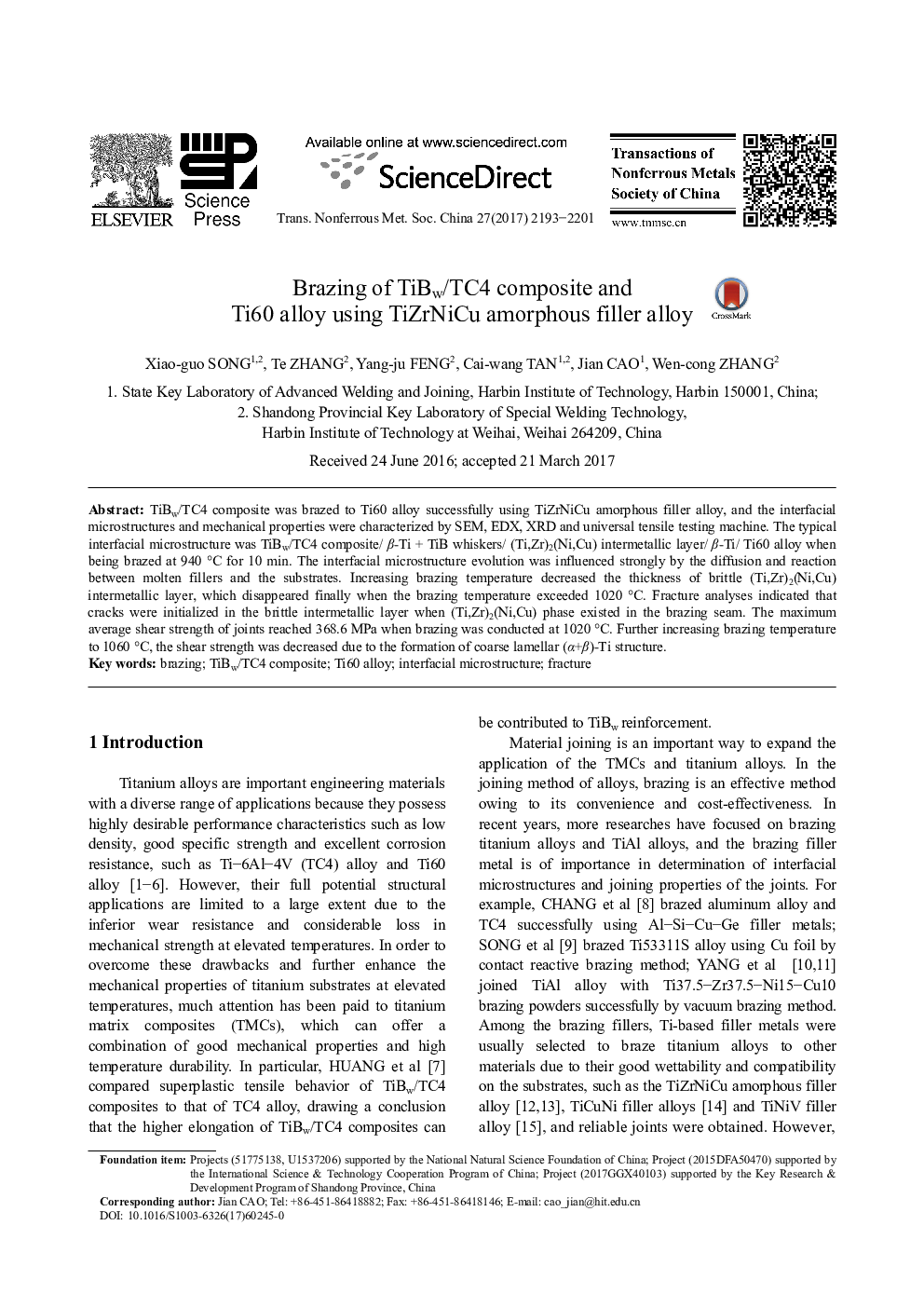| Article ID | Journal | Published Year | Pages | File Type |
|---|---|---|---|---|
| 8011795 | Transactions of Nonferrous Metals Society of China | 2017 | 9 Pages |
Abstract
TiBw/TC4 composite was brazed to Ti60 alloy successfully using TiZrNiCu amorphous filler alloy, and the interfacial microstructures and mechanical properties were characterized by SEM, EDX, XRD and universal tensile testing machine. The typical interfacial microstructure was TiBw/TC4 composite/β-Ti + TiB whiskers/(Ti, Zr)2(Ni, Cu) intermetallic layer/β-Ti/Ti60 alloy when being brazed at 940 °C for 10 min. The interfacial microstructure evolution was influenced strongly by the diffusion and reaction between molten fillers and the substrates. Increasing brazing temperature decreased the thickness of brittle (Ti, Zr)2(Ni, Cu) intermetallic layer, which disappeared finally when the brazing temperature exceeded 1020 °C. Fracture analyses indicated that cracks were initialized in the brittle intermetallic layer when (Ti, Zr)2(Ni, Cu) phase existed in the brazing seam. The maximum average shear strength of joints reached 368.6 MPa when brazing was conducted at 1020 °C. Further increasing brazing temperature to 1060 °C, the shear strength was decreased due to the formation of coarse lamellar (α+β)-Ti structure.
Related Topics
Physical Sciences and Engineering
Materials Science
Metals and Alloys
Authors
Xiao-guo SONG, Te ZHANG, Yang-ju FENG, Cai-wang TAN, Jian CAO, Wen-cong ZHANG,
